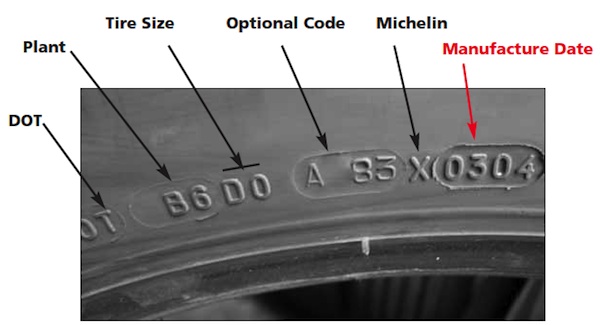Michelin Technical Bulletin – May 15, 2006
The following recommendation applies to RV/Motorhome tires. Tires are composed of various types of material and rubber compounds, having performance properties essential to the proper functioning of the tire itself. These component properties evolve over time.
For each tire, this evolution depends upon many factors such as weather, storage conditions, and conditions of use (load, speed, inflation pressure, maintenance, etc.) to which the tire is subjected throughout its life. This service-related evolution varies widely so that accurately predicting the serviceable life of any specific tire in advance is not possible.
That is why, in addition to regular inspections and inflation pressure maintenance by consumers, it is recommended to have RV/Motorhome tires, including spare tires, inspected regularly by a qualified tire specialist, such as a tire dealer, who will assess the tire’s suitability for continued service. Tires that have been in use for 5 years or more should continue to be inspected by a specialist at least annually.
Consumers are strongly encouraged to be aware not only of their tires’ visual condition and inflation pressure but also of any change in dynamic performance such as increased air loss, noise or vibration, which could be an indication that the tires need to be removed from service to prevent tire failure.
It is impossible to predict when tires should be replaced based on their calendar age alone. However, the older a tire the greater the chance that it will need to be replaced due to the service-related evolution or other conditions found upon inspection or detected during use.
While most tires will need replacement before they achieve 10 years, it is recommended that any tires in service 10 years or more from the date of manufacture, including spare tires, be replaced with new tires as a simple precaution even if such tires appear serviceable and even if they have not reached the legal wear limit.
For tires that were on an original equipment vehicle (i.e., acquired by the consumer on a new vehicle), follow the vehicle manufacturer’s tire replacement recommendations, when specified (but not to exceed 10 years).
The date when a tire was manufactured is located on the sidewall of each tire. Consumers should locate the Department of Transportation or DOT code on the tire that begins with DOT and ends with the week and year of manufacture. For example, a DOT code ending with “0304” indicates a tire made in the 3rd week (Jan) of 2004.
